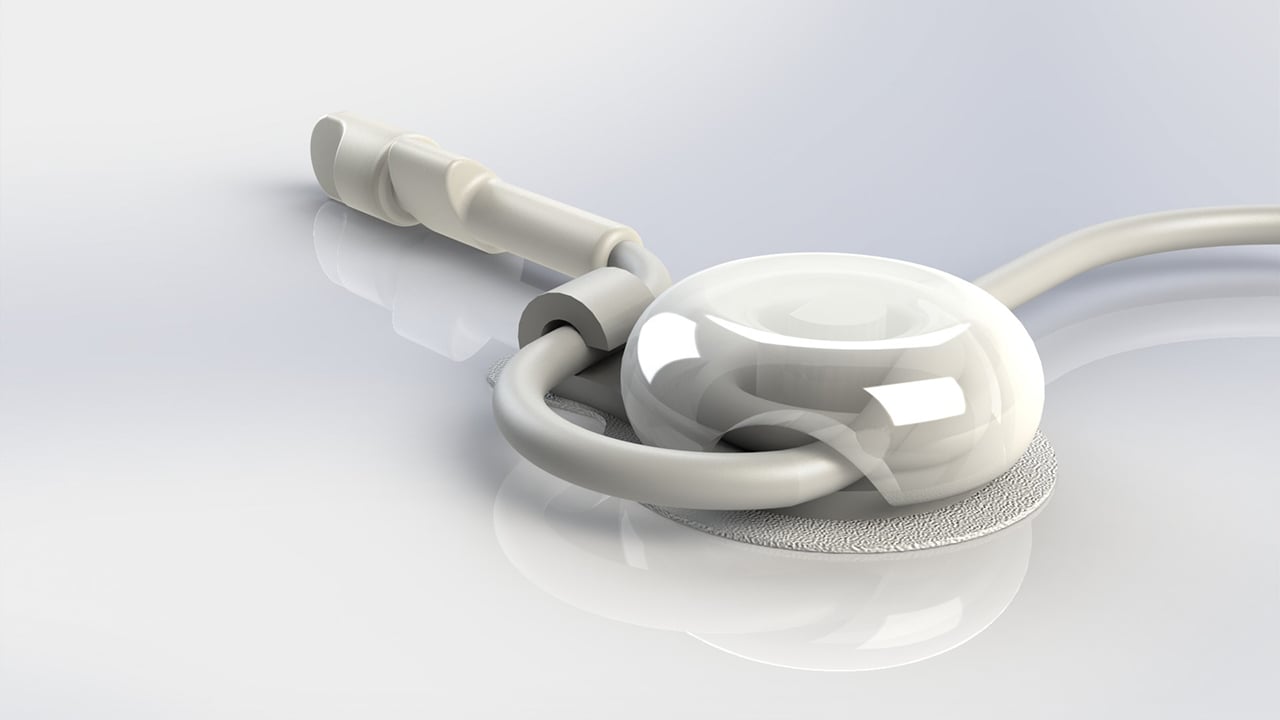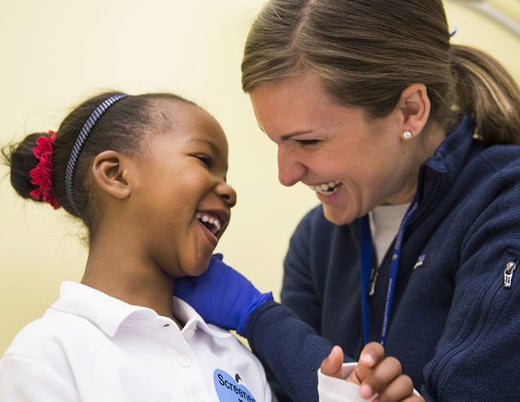Is there a better way than tape and gauze to secure gastrostomy buttons and central venous catheters?
The problem with gastrostomy buttons
Pediatric surgeon Steven Moulton, MD, places a lot of gastrostomy buttons (g-buttons). Most pediatric surgeons do. Worldwide, more than 3.5 million g-buttons are placed or replaced every year. “And they’re fraught with problems,” says Dr. Moulton, who also serves as Associate Trauma Medical Director at Children’s Hospital Colorado. “If you make a hole through the abdominal wall and into the stomach, it’s going to leak. The gastric contents are acidic, which can cause skin irritation. It’s moist, so that can lead to a skin infection. And gastrostomy buttons can be accidentally dislodged. A few years ago, I took notice of how much time our pediatric surgery nurses were spending on the phone with parents struggling with g-button complications. And the only things we were giving parents to secure and manage their child’s new g-button were tape and gauze. I thought, ‘There has to be a better way.’”
Gastrostomy button solution
A $25,000 seed grant from the CU Department of Surgery was enough to pull together a team of graduate mechanical engineering students at the University of Colorado Boulder. The problem was a complicated one.
“We had to balance securing the gastrostomy button with facilitating changing the gauze pad and stabilizing the device. It needed to provide ventilation for the gastrostomy site, and it had to be childproof. We also wanted at least one of the plastic components to be reusable,” says Dr. Moulton. “We went through hundreds of iterations. Hundreds.”
One discovery, suggested by research assistant Tyler Mironuck, was an inner structure that secures the g-button but also acts as a guide to facilitate replacing the gauze sponge around the stem of the gastrostomy button.
The resulting device, known as the Button Huggie, has won several innovation awards, including Children’s Colorado’s Center for Innovation Challenge in 2019 and the Shark Tank challenge at the 2022 North American Society for Pediatric Gastroenterology, Hepatology and Nutrition (NASPGHAN) annual meeting. A randomized, controlled clinical trial comparing the Button Huggie to standard tape and gauze for securing new g-buttons is now enrolling patients at Children's Colorado hospitals in Aurora and Colorado Springs, as well as Primary Children’s Hospital in Salt Lake City. More than 50 children have been enrolled in the study, which will soon be expanding to Phoenix Children’s and Stanford Children’s.
Early feedback from parents of children who have completed the study is overwhelmingly positive. They believe their child’s g-button is more secure when wearing a Button Huggie and appreciate the simplicity of changing out the gauze sponge. In addition, there have been fewer accidental g-button dislodgements while wearing a Button Huggie when compared to tape and gauze.
A central venous catheter solution
Under Food and Drug Administration rules, the Button Huggie doesn’t require formal FDA clearance as a new medical device because it replaces tape and gauze as a means to secure a device that is already cleared by the FDA. That saved considerable time and expense. And it got Dr. Moulton thinking: What other surgical devices need to be secured?
One obvious choice was external tunneled central venous catheters, which are inserted in a vein to facilitate venous access for chemotherapy, medication delivery, hydration, nutrition, blood draws and a host of other applications. These types of catheters are held in place by a Dacron cuff under the skin. Over the course of about four weeks, subcutaneous tissue grows into the cuff and secures the catheter. The trouble is the four weeks before it becomes secure.
If the patient is sick or immunocompromised, it could take eight weeks or longer for the catheter to be secured in the soft tissue. And before it's secured, the catheter is at risk of being tugged on by a young child, or it might get caught on something, leading to accidental dislodgement. There’s also the risk of bacteria migrating up the catheter and around the unsecured cuff, infecting the bloodstream.
With a $25,000 grant from the Children’s Colorado Center for Children’s Surgery, Dr. Moulton assembled another team at CU Boulder with a new challenge and a new set of requirements.

The securement device could not change the method nurses were familiar with for dressing the exit site. Nor could it crimp or in any way damage the catheter, which could cause blood leakage or infection or require an operation to replace the damaged catheter.
“The design we came up with is completely separate from the exit site, so it doesn’t change the method of dressing at all,” Dr. Moulton says. “And it simplifies the management of the hub and greatly reduces the chances of dislodgement.”
A small clinical trial tested the first prototype in late 2020, however, the clinical trial was shut down by COVID-19. Final prototyping will resume in the summer of 2024.
This article was originally published in September 2020. It was updated in May 2024.
Featured Researchers

Steven Moulton, MD
Director
Burn and Trauma Programs
Children's Hospital Colorado
Professor of pediatric surgery
University of Colorado School of Medicine





 720-777-0123
720-777-0123










